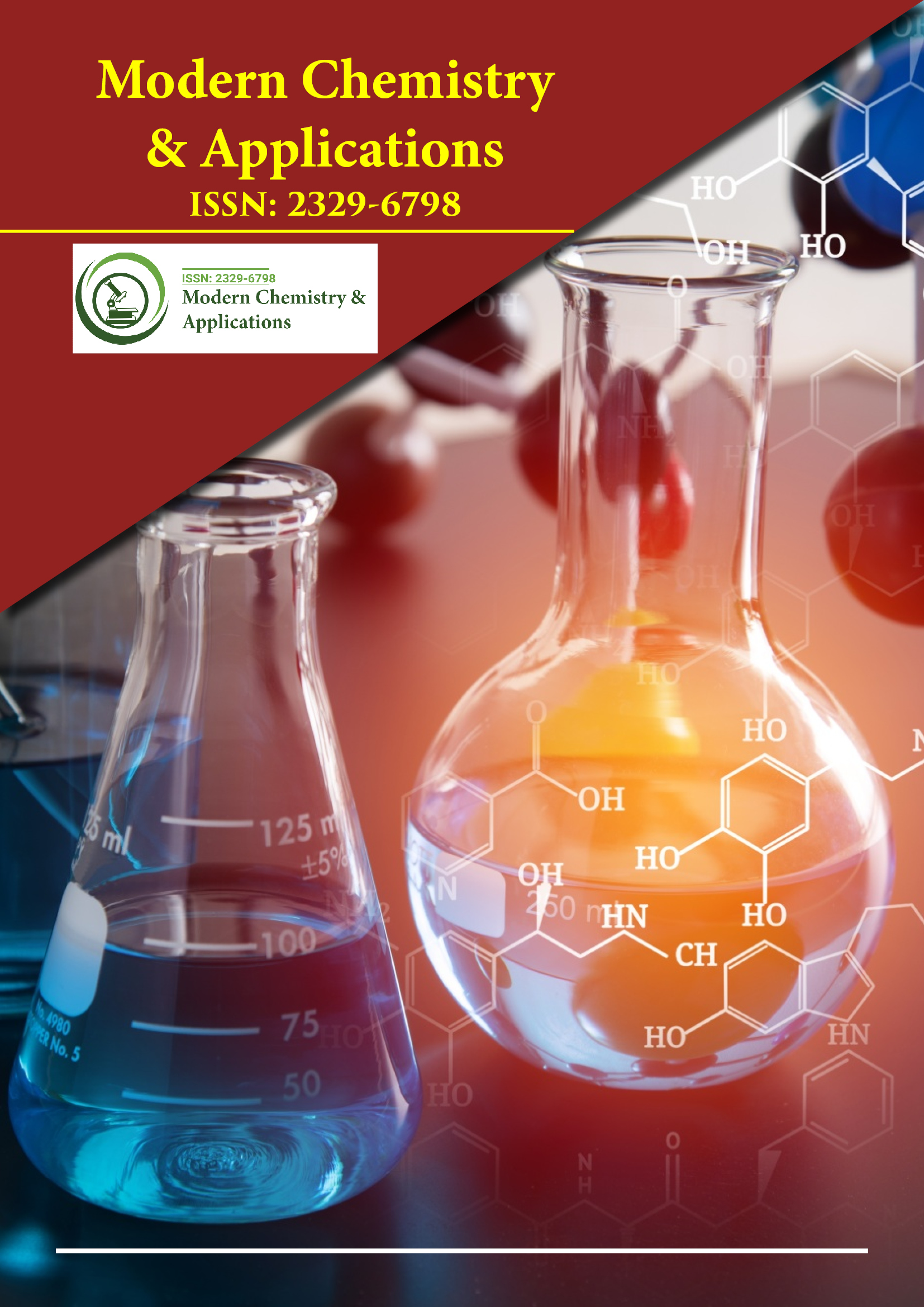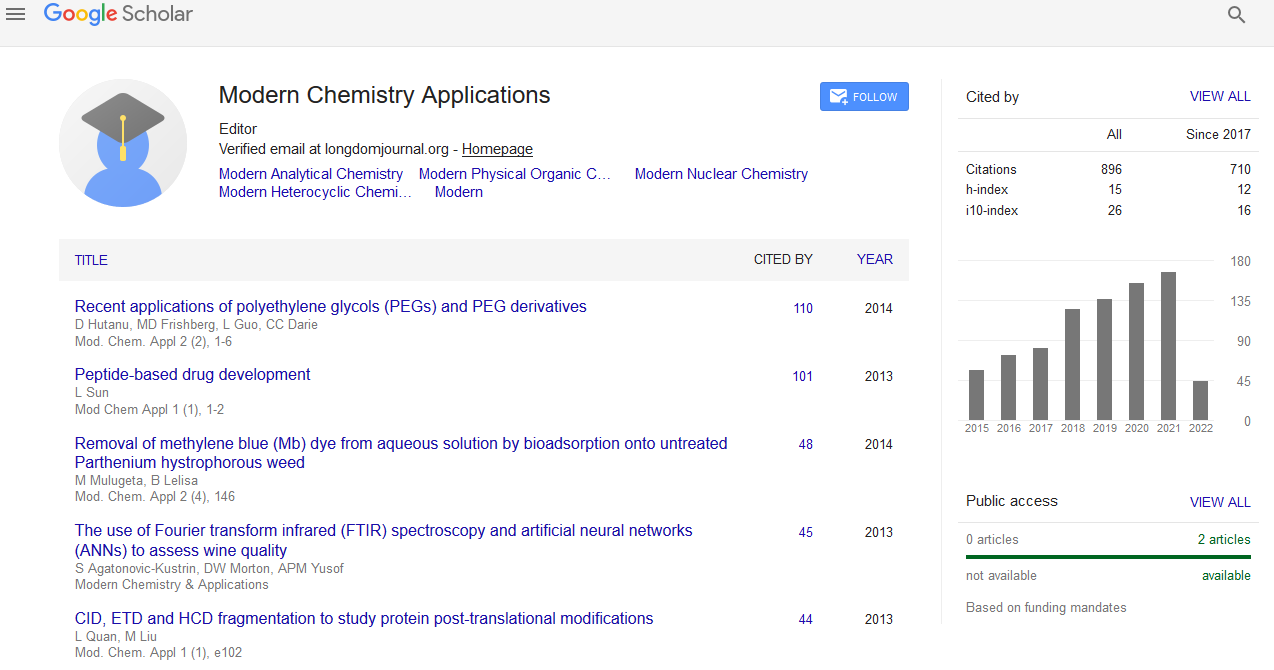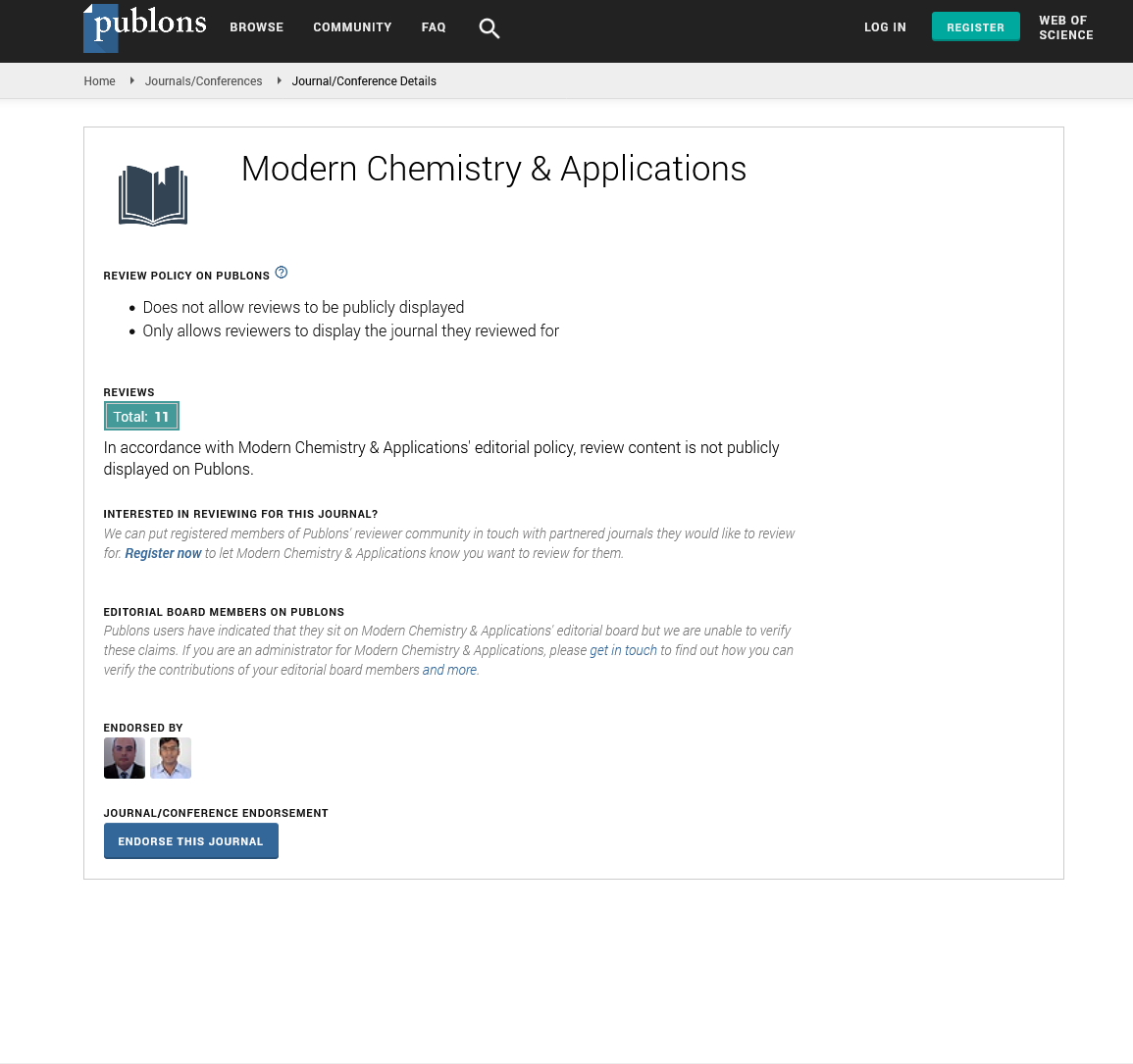Indexed In
- Open J Gate
- JournalTOCs
- RefSeek
- Hamdard University
- EBSCO A-Z
- OCLC- WorldCat
- Scholarsteer
- Publons
- Geneva Foundation for Medical Education and Research
- Google Scholar
Useful Links
Share This Page
Journal Flyer

Open Access Journals
- Agri and Aquaculture
- Biochemistry
- Bioinformatics & Systems Biology
- Business & Management
- Chemistry
- Clinical Sciences
- Engineering
- Food & Nutrition
- General Science
- Genetics & Molecular Biology
- Immunology & Microbiology
- Medical Sciences
- Neuroscience & Psychology
- Nursing & Health Care
- Pharmaceutical Sciences
Perspective - (2025) Volume 13, Issue 1
Revolutionizing Drug Discovery with Computational Chemistry
Anika Vogel*Received: 26-Feb-2025, Manuscript No. MCA-25-29056; Editor assigned: 28-Feb-2025, Pre QC No. MCA-25-29056 (PQ); Reviewed: 14-Mar-2025, QC No. MCA-25-29056; Revised: 21-Mar-2025, Manuscript No. MCA-25-29056 (R); Published: 28-Mar-2025, DOI: 10.35248/2157-7560.25.13.486
Description
Computational chemistry is changing how new medicines are found by offering faster and more focused methods to study and predict how molecules behave. Instead of relying entirely on physical experiments, scientists can now use computer models to explore chemical properties, simulate reactions and examine how compounds might interact with biological targets. This approach reduces the number of laboratory trials needed and helps select the most likely candidates for testing.
Traditionally, drug discovery involved testing large numbers of compounds in the lab, hoping to find one with the right activity and safety profile. This process is time-consuming and often expensive. With modern computational tools, it becomes possible to screen thousands or even millions of molecules virtually. These models predict how strongly a compound might bind to a protein or how likely it is to have side effects, narrowing down the field before any real-world tests begin.
One of the most important uses of computational chemistry in this area is molecular docking. This technique estimates how a small molecule fits into the structure of a larger one, such as a drug binding to a target protein in the body. The strength and shape of this interaction are important in determining whether the compound will be effective. By running thousands of simulations, researchers can predict which structures are more likely to succeed and avoid spending time on poor candidates.
Another valuable method is molecular dynamics, which studies how molecules move and change shape over time. These motions are often important in understanding how drugs work, especially for proteins that shift their structure during activity. Simulations provide detailed views of how these changes occur and how molecules interact during those changes. This helps researchers choose compounds that remain effective under a variety of biological conditions.
Computational chemistry also plays a role in understanding how drugs are absorbed, distributed, broken down and removed from the body. Predictive models can estimate how well a drug might enter the bloodstream, whether it will reach its intended target and how long it will stay active. This kind of information can save time by eliminating compounds with poor potential before clinical trials begin.
Many of these methods rely on accurate models of molecules and biological systems. Advances in computing power and machine learning have made it easier to analyze large amounts of chemical data and refine these models over time. By learning from both successful and failed compounds, algorithms can improve predictions and help scientists make better decisions during the discovery process.
Collaboration is another important feature of this approach. Chemists, biologists, physicists and data scientists often work together to design and evaluate virtual experiments. Each brings a different perspective, helping to refine strategies and interpret results. This teamwork leads to better outcomes and more efficient use of resources.
Another benefit of computational chemistry is the ability to explore new ideas quickly. Instead of waiting weeks or months to synthesize and test a new compound, researchers can build and test digital versions in a matter of hours or days. This makes it easier to respond to new information or changes in research direction. It also allows more creativity in compound design, as even unusual or complex molecules can be evaluated for potential benefits.
In recent years, drug discovery has expanded to target diseases that were previously considered difficult to treat. These include conditions where the biological pathways are poorly understood or where traditional drug design has failed. By applying computer-based tools, scientists can study these systems in greater detail and propose solutions that might not have been considered through trial-and-error methods alone.
Safety remains a top concern in developing new medicines and computational tools are helping address that as well. By predicting toxic effects and interactions with other drugs, these methods help reduce risk and improve the chances of success in clinical testing. This not only improves patient safety but also reduces the time and cost involved in bringing new treatments to market.
The field continues to evolve as better algorithms and larger data sets become available. As more information is collected from past experiments and clinical trials, computer models become more reliable and useful. This feedback loop where new data helps improve future predictions is a central advantage of computational chemistry.
By integrating simulation, modeling and predictive analysis into the drug discovery process, scientists are changing the way medicines are developed. The goal is to make research more efficient, reduce failure rates and identify better treatments faster than before. This shift is allowing researchers to test more ideas and bring new therapies to those who need them, with greater speed and precision.
Citation: Vogel A (2025). Revolutionizing Drug Discovery with Computational Chemistry. Modern Chem Appl. 13:486.
Copyright: © 2025 Vogel A. This is an open access article distributed under the terms of the Creative Commons Attribution License, which permits unrestricted use, distribution and reproduction in any medium, provided the original author and source are credited.


